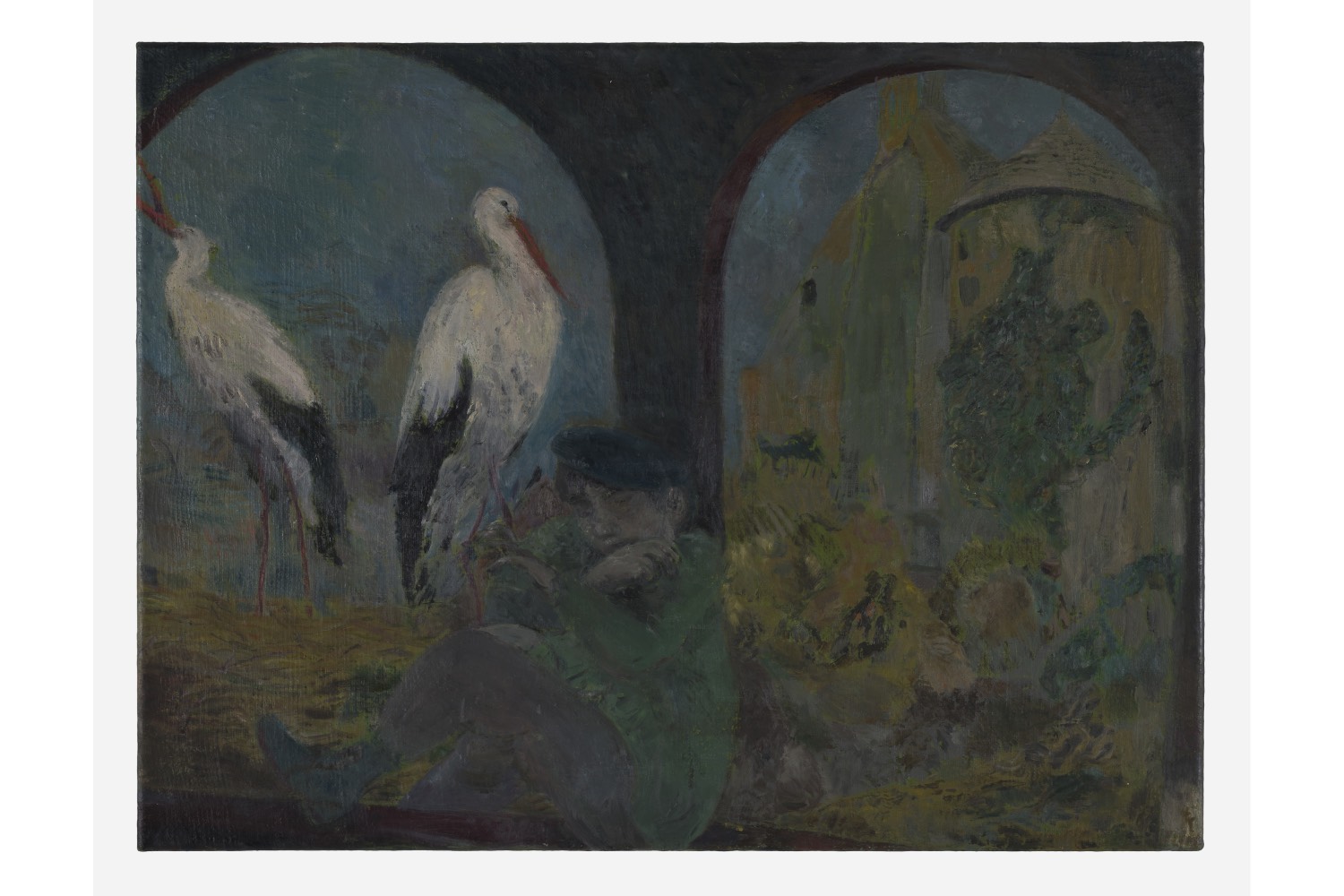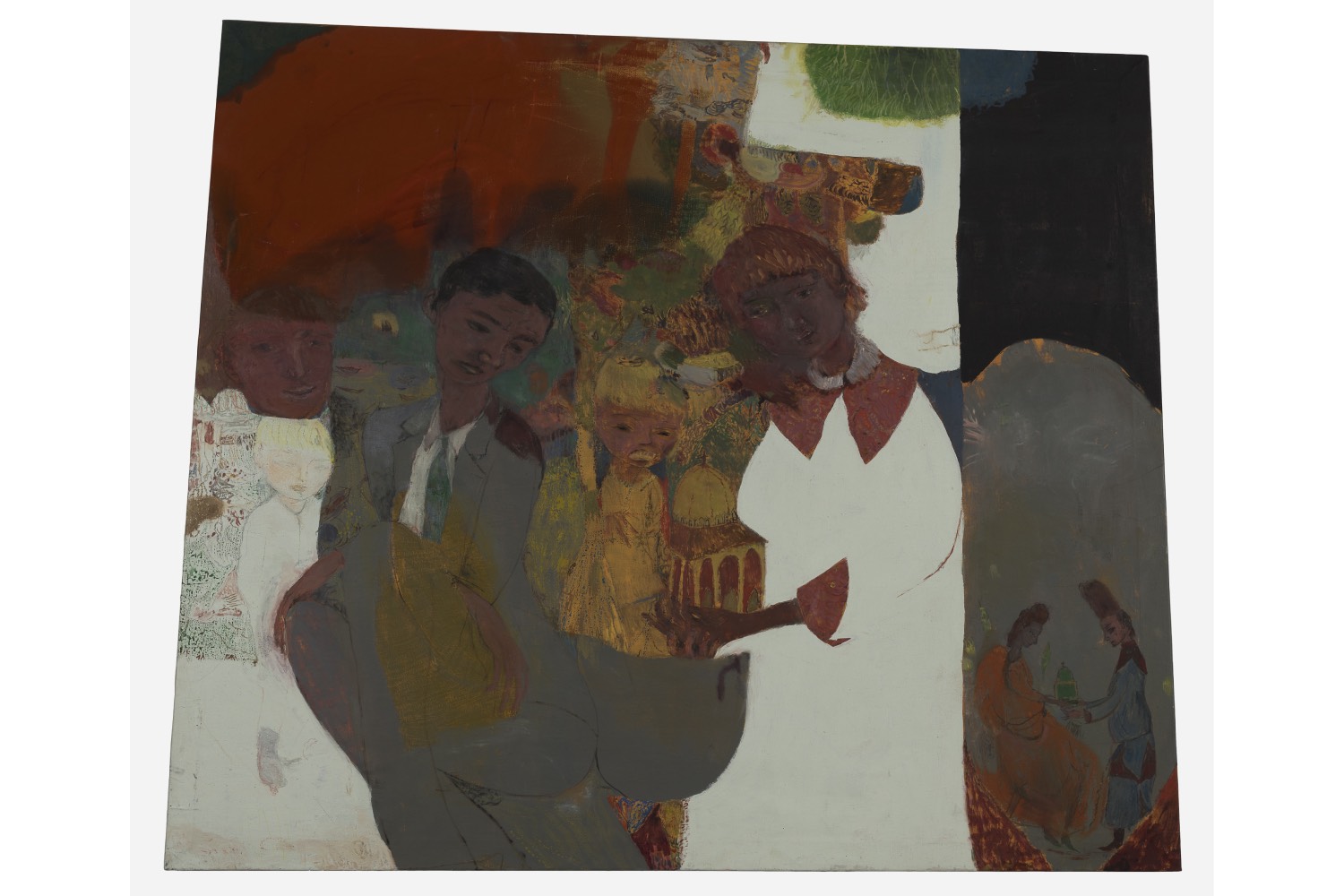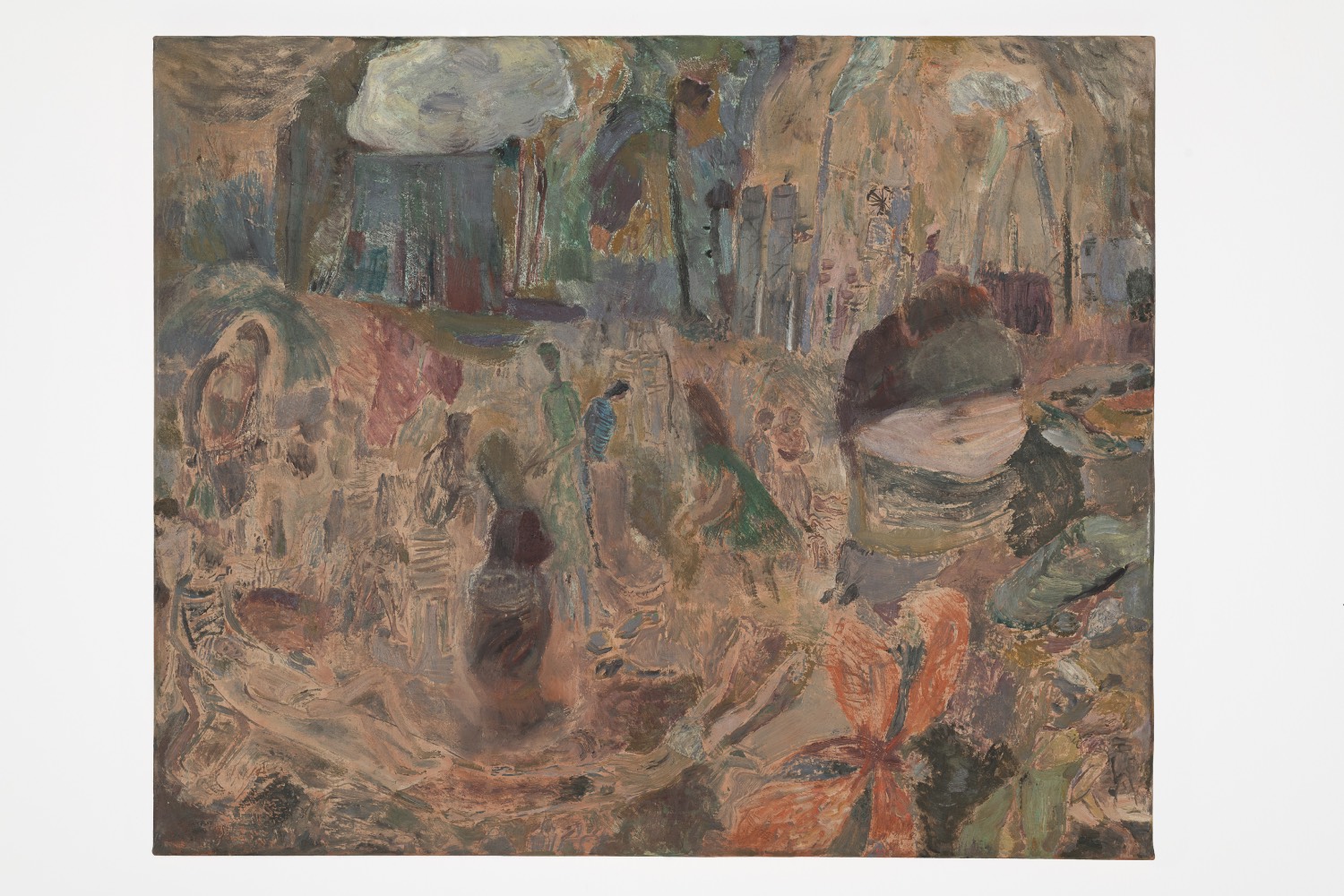In Kai Althoff’s exhibition “di costole” at Nervi Delle Volpi, a new space in Genoa organized by Berlin’s Galerie Neu, there are nineteen paintings and four drawings. The show also features some nice furniture – some of it custom-made – and a large selection of tall ferns in the hall with two chairs and a desk conspiratorially set amongst them. There are even colorful candies in the desk drawer if you care to check, but none of this is on the works list. It is notable because Althoff rarely provides such an unobstructed view of his paintings. I mean, there is the difficulty of getting to Genoa, but…
The last Althoff show I saw in person was at the Museum of Modern Art in New York in 2016. It was a playground of diffusion and resistance, all of the works and tchotchkes blended together under a literal big top. A large number of the paintings borrowed from collectors and collections were rebelliously exhibited still in their crates. “di costole” is a fitting bookend, or antithesis: the paintings are real windows to look into, real propositional scenes. I keep wanting to describe the work as romantic, but here it’s more French romanticism than German –– more emotional, less ideological. But actually, I think Althoff is doing poetic realism. Effi Briest, Theodor Fontaine’s 1895 masterpiece of the genre, about the titular heroine’s ill-fated marriage to an aristocrat, is a good reference.
Often in Althoff’s images, biblical scenes suggest themselves only to be crowded by extra-textual characters and onlookers. “di costole” translates to “of ribs” in English, calling to mind that first divine surgery. One painting alludes to the story of Isaac’s aborted sacrifice, but now, confusingly, the whole family is present, and no one seems particularly relieved to see the rope cut that binds the boy’s hands. There is also an angel pushing through the wallpaper, but no substitute sacrificial ram. These works are then pointedly not allegorical images; these are the lives myths are made of.
I should stop and describe the paintings. You need half an hour to acclimate to their density. Some are so scratched into the effect is almost pointillist, the colors caught in the weft and weave of the fabrics. Others are covered in washes applied out of order, thin over fat, very against painting rules. But still more are painted almost completely dryly. The fabrics are colorful too, not just cotton and linen but fabrics that normally would be used for rich upholstery or shirting. In a few works there is what appears to be a seam running roughly horizontally through the paintings, but it’s not sewn, it’s creased –– did he fold the works? The four drawings, the pieces most like sculpture, are on paper more fit for wrapping fish or flowers and are also all divided in half, one part completely empty the other emphatically full of every type of mark. Everything is overpainted. Bonnard and Vuillard’s rich blacks applied in weighty shapes obscure decipherable interiors into theatrical abstractions.
Most of the canvases in the exhibition are crooked. Someone I asked suggested that it is the heavy emotionality or maybe also the historical weight of capital P painting that causes Althoff to make the frames bowed. I think that life might just be that wobbly. That it is that difficult, not to paint, but to draw a clean square around our experience. My favorite painting (or the only one that inspired a question of preference in me) is in the last room between the street sweeper, the lonely soldier, and the birthday boy. It is the only work of Althoff’s I can think of in which he seems to allude to another one of his own paintings. In the upper left part of the frame two boys lean together under a tree. The pair reproduce a similar scene of coupled pastoral idyll of an earlier work from 2018, where the boys become part of a motif in what is actually a painting of a yellow handkerchief. In both works, the couple is stuck between being themselves together and a symbol of queer togetherness.
In one painting, a jolly Kilroy is lightly rendered into the scraped surface of the bottom left frame, underneath the boys. He looks like that iconic, ineptly restored messiah. If he is an emissary, then his message is something about sensuality — how beyond, or before, our didactic moral constructions of narrative, there is a whole world of sensual meaning. Painting is an argument for that unquantifiable meaning, an experience beside experience. In Effi Briest, the protagonist’s mother describes her as “a child, beautiful and poetic” who wants to paint pictures of the future, “the more colorful they are, the more beautiful and desirable they seem.” Althoff is not Effi. He plays with her perspective, but he knows the impositions the world makes on dreamers — conformity, fixity, explication, consistency, value. One critical lesson I have learned from Althoff is to rigidly protect what, as an artist, you are willing to give away. Remember: Adam didn’t give his rib – God took it.
What is offered in “di costole” is a sensual set of realities apart from, and rigorously not in need of, an explanation. This isn’t the typical refusal we might expect from Althoff. Instead, it feels like a gentle encouragement or allowance to rest in sensual reality, and to test the abundant meaningfulness of that type of enjoyment against the urge to metaphorize, evaluate, and illustrate.







